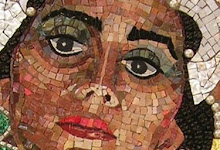
Way back in the old country, I used to create Rosh Chodesh meetings just about every month for the women of our community. Half of the night was devoted to doing something new and fun and the other half was for “exploring the mystical insights into the month of x” (after 8 years I’ve got that line down pat!) While I don’t miss the planning, arranging and advertizing(read: begging people to come), I do miss the learning and teaching. So here it goes… my first ever virtual Rosh Chodesh Club welcoming in the month of Kislev. We may not have silk painting and there won’t be candle making, but there will be Torah, and hopefully a whole lot of inspiration for your month.
Every month has its own energy and symbol. It also has its own letter, color, body part, tribe, and sense. When you put all of these facets together you have an understanding of the opportunities that this month presents us with. So what do the letter Samech, the color blue, the tribe of Benjamin, the bow and arrow, the stomach, and sleep all have in common? The answer is: TRUST. In short, here is how they all connect. The letter Samech is related to the Hebrew word
somech, which means to support. Trust in Gd is knowing that He is always there to support us. In addition, the letter looks like a circle which is symbolic of Gd's all-encompassing love for us and involvement it our world, kind of like a baby in a womb. The color blue also reminds us of Gd’s constant care. Like the blue fringe on tzitzit, the color blue is meant to remind us of the sky, and beyond it, to our Father in Heaven watching over us. The bow and arrow are a bit tougher to explain. When I was in college, I was supposed to read the book “Zen and the Art of Archery.” Of course I didn’t actually read the whole thing, but I learned the basic idea from the bit that I read, which was that archery teaches a person to focus on who they are BEING and not on what they are DOING. The ability of the archer to shoot straight at his target depends upon a most tranquil inner spirit. When we are tranquil, i.e. trusting, we make our best decisions and that’s when we are most likely to hit our targets. In addition, once our arrow is shot – once we take action – we trust that the arrow, or our action, will end up wherever it is meant to go. This is how the few and weak Chashmonaim of the Chanukah story were able to defeat the great and mighty Greek army. They were masters of the bow and arrow – both physically and spiritually. The Tribe of Benjamin who is also known for archery prowess is associated with trust in Hashem. "To Benjamin he said: the beloved of G-d, He shall dwell in
trust over him, He hovers over him all the day, and between his shoulders He rests" (Deuteronomy 33:12). Trust is also associated with sleep, because going to sleep is actually a great act of faith. Sleep, which is said to be 1/60th of death, requires trust that we will wake up the next day (something we often take for granted) and that nothing bad will happen to us and our homes while we are unconscious. Alternatively, we can understand that it’s only when a person has trust in the future that he can dream (sleep) about a better tomorrow. What’s left to explain is the stomach, but I think we can all relate to the way our stomach behaves when we are stressed out and anxious, as opposed to trusting and tranquil. IBS anyone? Trust feels soooo much better.
What this all means, is that this month provides us with the spiritual support to attain the state of mind (or at least come one step closer to it) that the Chasmonaim had during the story of Chanukah. This is a mindset and way of being that leads to miracles. It is the mindset of absolute trust and tranquility. In the words of The Alter of Kelm “He who has gained peace of mind has gained everything.” A few days ago I noticed that an overwhelming amount of my posts here have to do with fear, in particular my Arab-phobia, though some days I’m even afraid of my kids (ages 2, 5 and 6). No question I need to work on trust and tranquility and it’s not easy. Life is scary and we are living in very uncertain times. So here is a quote that I feel is particularly helpful: “He who fears one, fears none. He who fears many, fears any.” In other words, when we realize that everything that happens to us is from the ONE (who does everything for our best) who or what can we fear? But if we have other “gods” like money, people, you name it, then life is a very scary place with danger lurking around every single corner. This month is a great time to make the shift from fear to trust and from living out of worry to living out of love. So relax, dream, take aim at your goals, and let the arrows go. Know that wherever they (or you) end up is exactly where they (or you) are meant to be.
Have a meaningful, restful, and tranquil month my friends. And just in case you are still craving to create,
click here for some great ideas. Supplies not included.
One more thing -- you can check out more on Kislev at
inner.org. My thoughts were largely based on Rav Ginsburg's writings there, who bases his comments on the Book of Formation/Sefer Yetzirah.
Chodesh Tov!










